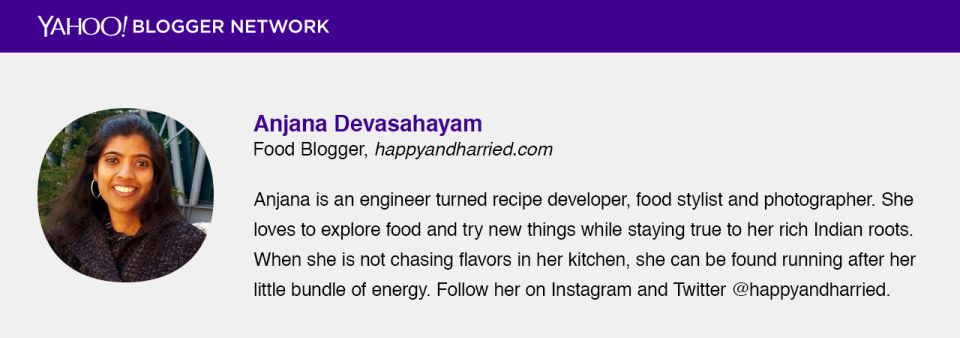Love Indian food? These are the spices you need to stock up on
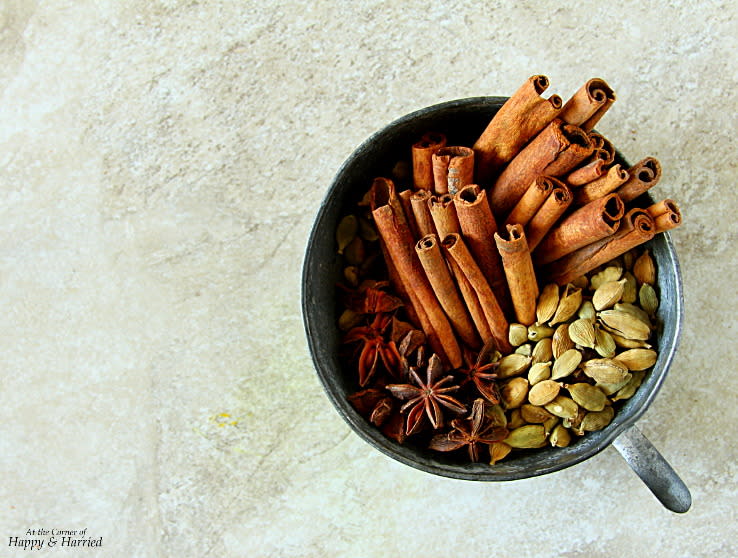

[Photo: At The Corner Of Happy & Harried]
Curry lovers, listen up. Do you read Indian recipes and wonder what exactly are those ingredients, where do you find them and how exactly to use them? Have you given up on trying Indian food at home because there was always an ingredient missing?
First of all, chuck that bottle of supermarket “curry powder” out. There is no single magic potion in Indian cuisine and the only thing curry powder does is make all your curries taste exactly the same.
Indian cuisine is one of the oldest and probably most misunderstood cuisines in the world today. It varies so widely among different regions in India but there are common threads running through them all.
To get started with cooking Indian food, there are a few basic ingredients you’ll need to stock up on but before that, let us understand a couple of terms.
Tadka & Masala
Tadka or tarka is a cooking technique whereby the cooking fat (oil or ghee) is flavored with a variety of seeds, spices and other aromatics. Depending on the recipe, this step can either be done at the beginning or at the very end like a garnish.
The term masala can be used for either dry spice mixes or the spiced Indian equivalent of a French mirepoix or Spanish sofrito. Onions, ginger, garlic, tomatoes (and sometimes coconut and nut pastes as well) are sauteed in oil, flavored with spices and reduced to make the base for different gravies and sauces, loosely referred to as curry.
Here are some essential ingredients to stock in your masala dabba or spice box to get started with Indian cooking.
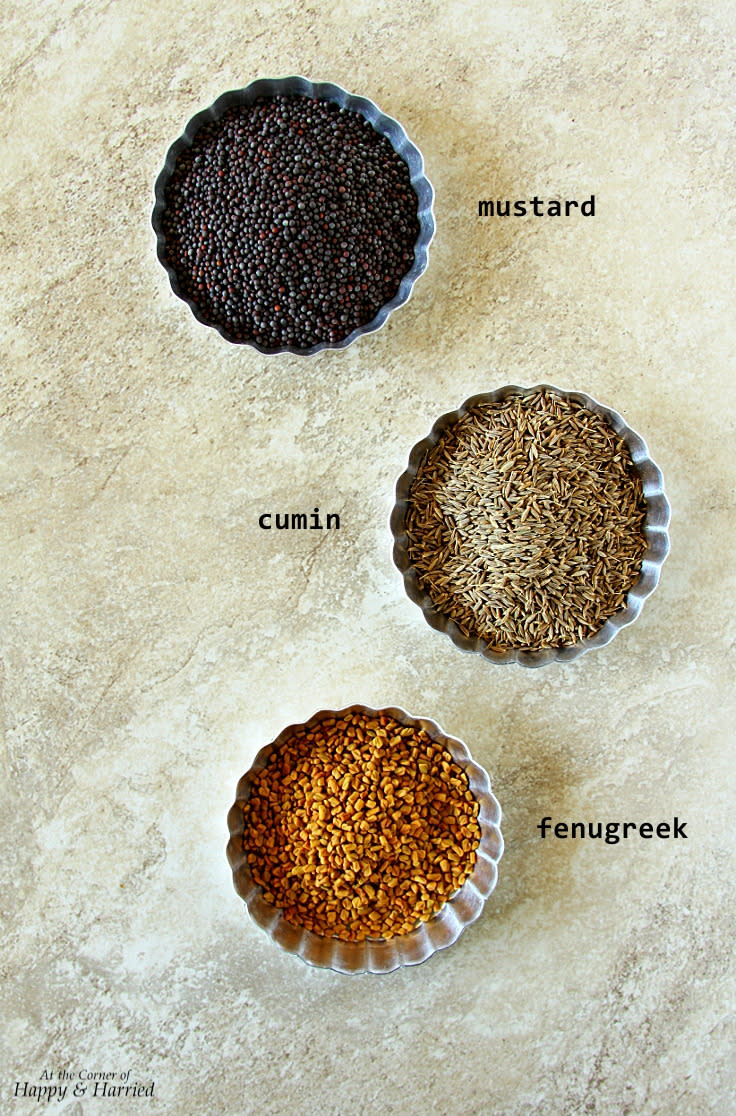
Mustard, cumin & fenugreek [Photo: At The Corner Of Happy & Harried]
Mustard seeds release their nutty flavor when fried in oil or coarsely ground. Black mustard seeds are most commonly used in Indian cuisine and are known as sarson or rai. Mustard oil is much sought-after in certain parts of India and has a distinct nutty albeit slightly pungent flavor. Mustard seeds usually find their way into tadka for curries and stir fries or in the spice mix for achar (spiced Indian pickle or preserves).
Cumin seeds are either used whole or roasted and ground to make cumin powder. Cumin has a slightly sweet and smoky flavor and is commonly used in a variety of recipes from curries to chutneys. Your best bet is to buy and store whole cumin seeds and make freshly ground cumin powder in a small spice grinder or mortar-pestle.
Fenugreek seeds taste bitter on their own but when fried together with other tadka ingredients, they release all their nutty goodness. They’re great when added to curries and lentil soups and is a common spice mix ingredient in South Indian recipes.
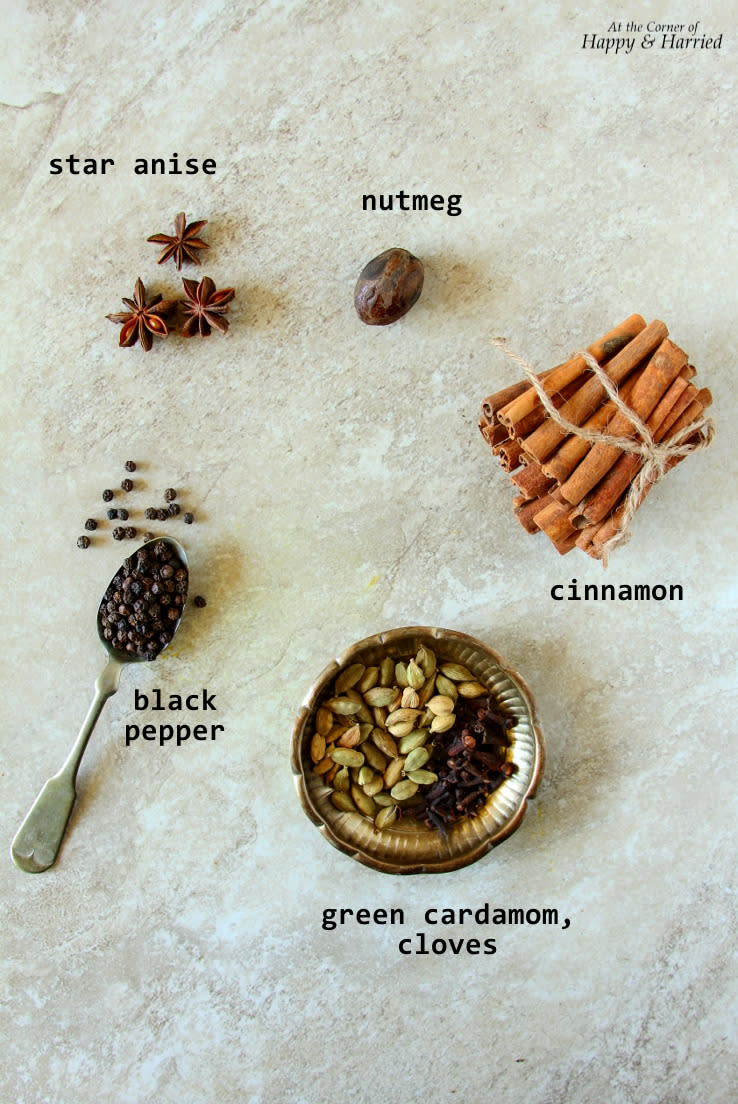
Aromatic spices - cinnamon, cardamom, cloves, black pepper, star anise and nutmeg [Photo: At The Corner Of Happy & Harried]
A bunch of aromatic spices are used in almost all Indian recipes, from curries to even desserts and beverages. Not all spices necessarily add heat to a dish, they are more like flavor boosters. Some common spices you need to stock up on are cinnamon, green cardamom, cloves, black pepper, star anise and nutmeg. Moderation is key while using these spices. They pack a powerful punch of flavor and a little goes a long way. A few of each spice can be fried in ghee to release their oils before making biryani rice and rich gravies or they can be ground and mixed into other masala powders. Green cardamom and nutmeg also find their way into Indian desserts and beverages like kheer (rice pudding) and lassi (yogurt drink).
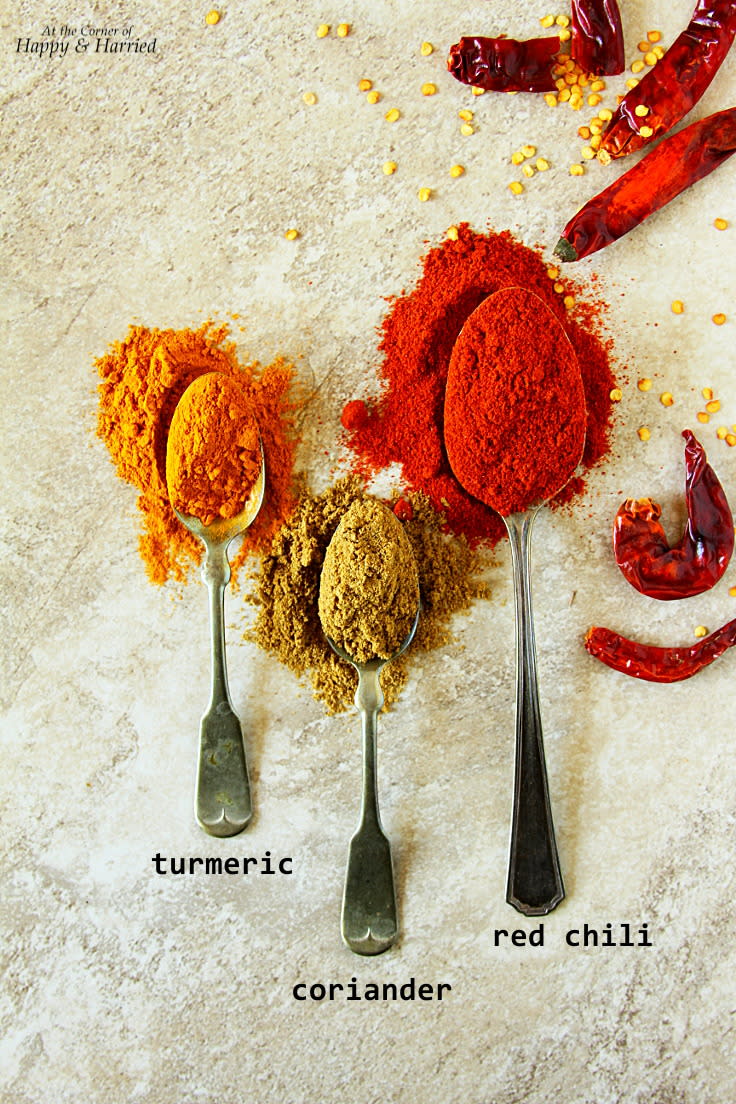
Turmeric, coriander and red chilies - The golden trio [Photo: At The Corner Of Happy & Harried]
These three spice powders, also known as the golden trio, are combined in different ratios to make most Indian gravies, both vegetarian and meat.
Fresh turmeric looks very similar to ginger root. Dried and powdered turmeric is what gives Indian recipes their distinct color. Use a little bit in soups, curries and gravies for a glorious golden colour, plus, they’re full of anti-oxidants and anti-inflammatory benefits.
Coriander is a highly aromatic spice with a distinct earthy, nutty flavor. Red chilies need no introduction and this is what adds spice or heat to Indian dishes. There are umpteen varieties of red chilies, but “Kashmiri chili powder” is a good one to start with. It has a deep crimson color and is not too hot.
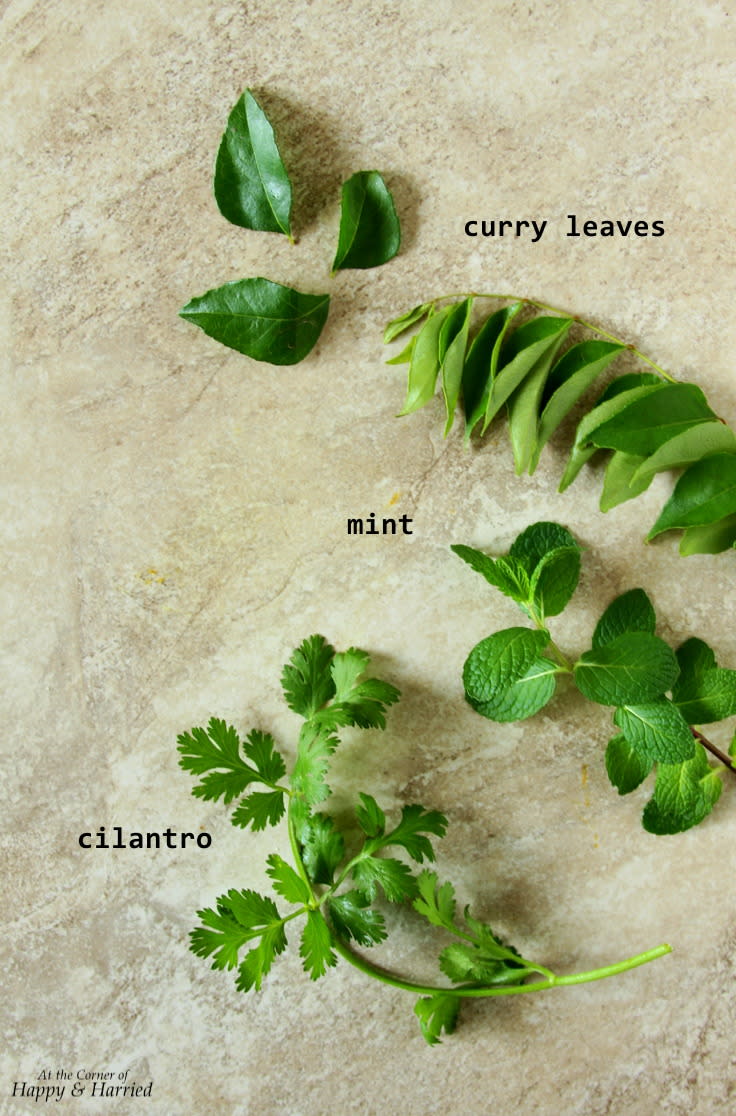
Curry Leaves, Mint & Cilantro [Photo: At The Corner Of Happy & Harried]
This was supposed to be only about essential dry spices, but I couldn’t leave out a few of the fresh herbs used in Indian cooking, of which mint and cilantro leaves are the most common. The curry tree is a native to India and surrounding regions. The aromatic leaves are great for seasoning in tadkas, spice mixes and even chutneys. Curry leaves are available in most Indian grocery stores and you can dry and store them to prolong their shelf life. Mint leaves add a burst of freshness and can cool down a fiery dish, and while not everyone is a fan of cilantro, this herb really rounds out the flavours of Indian cuisine.
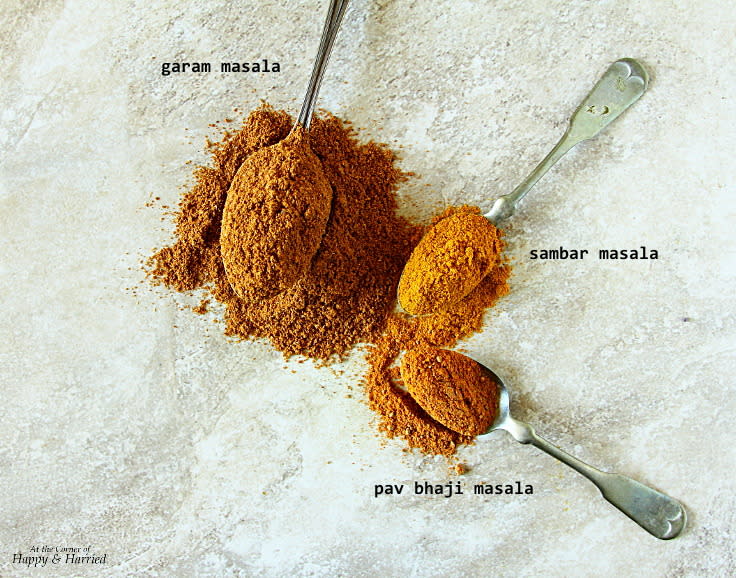
Spice blends - garam, sambar & pav bhaji masala powders [Photo: At The Corner Of Happy & Harried]
Even though I said you should steer clear of ready-made curry powders, there are a few hidden gems that are worth stocking up on. Garam masala, a blend of cumin, black pepper and other aromatic spices can be used in recipes along with turmeric and red chili powders or on their own. It also makes an excellent dry spice rub while grilling meat.
Sambar masala is a lesser known South Indian spice blend most commonly used to prepare a lentil-vegetable soup known as sambar. Stock up on this to add to your salad dressing or to use in stir fries.
And lastly, pav bhaji masala is a special hot and tangy spice blend that can be added to recipes in place of the golden trio or used in herb marinades for meat and fish.
Store spices in sealed bottles in a cool, dry place and reap their benefits every time you cook with them. Once you are comfortable using the basic spices, start experimenting with other ingredients. Trust me, it is so much fun and easier than you think.
Anjana Devasahayam is a foodie, baker, recipe creator and blogger at her blog, At The Corner Of Happy & Harried. Connect with her on Facebook, Instagram, Twitter & Pinterest.
Interested in writing for us? Join our Yahoo Blogger Network!
